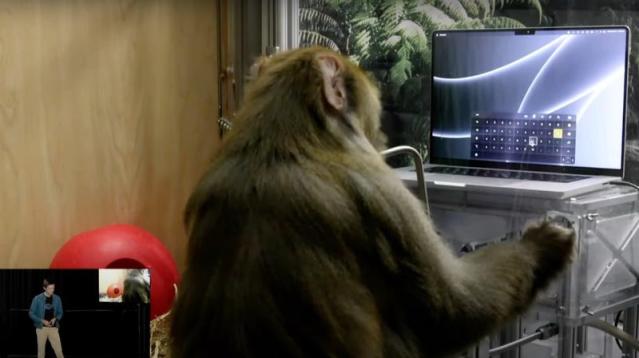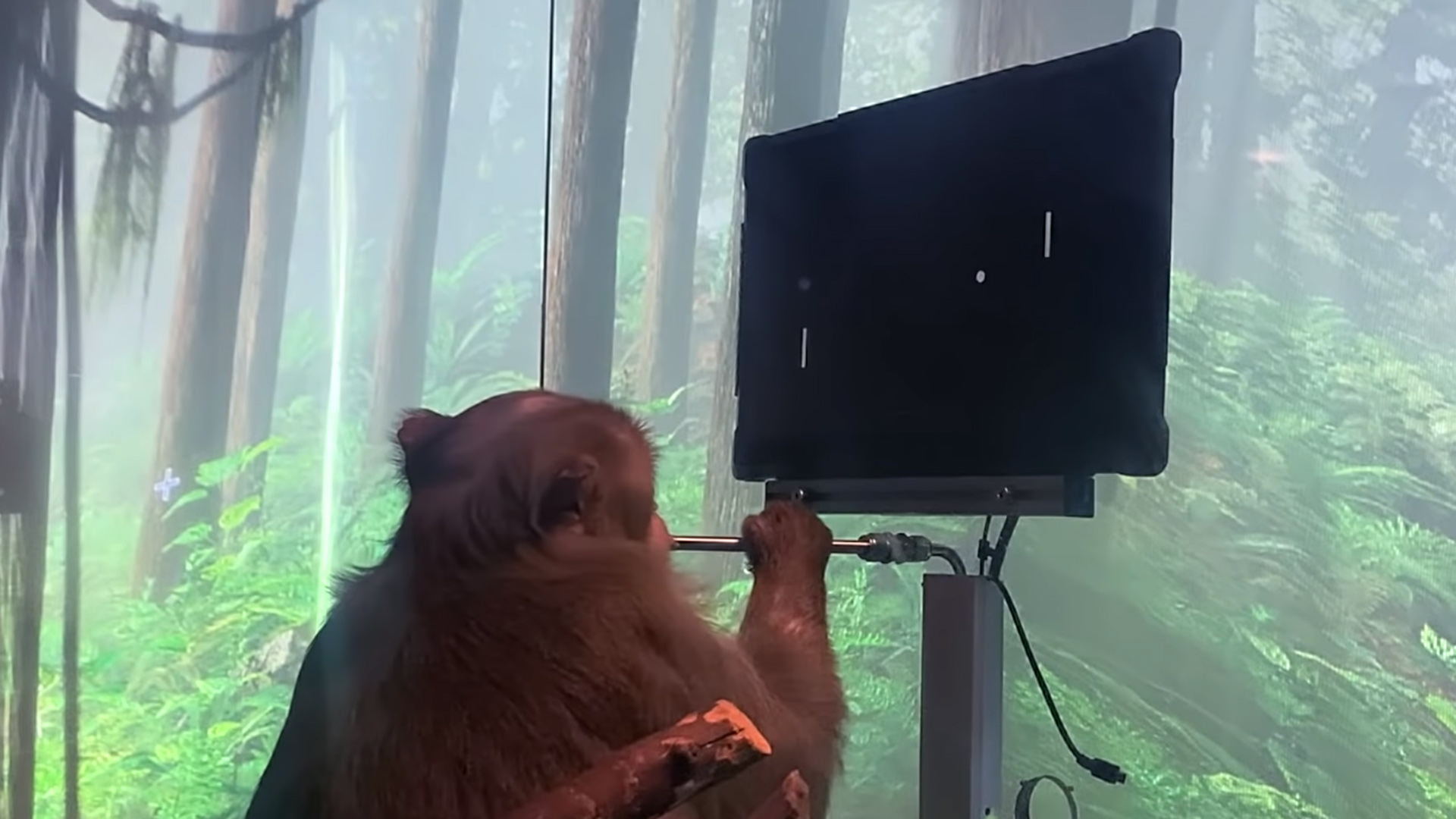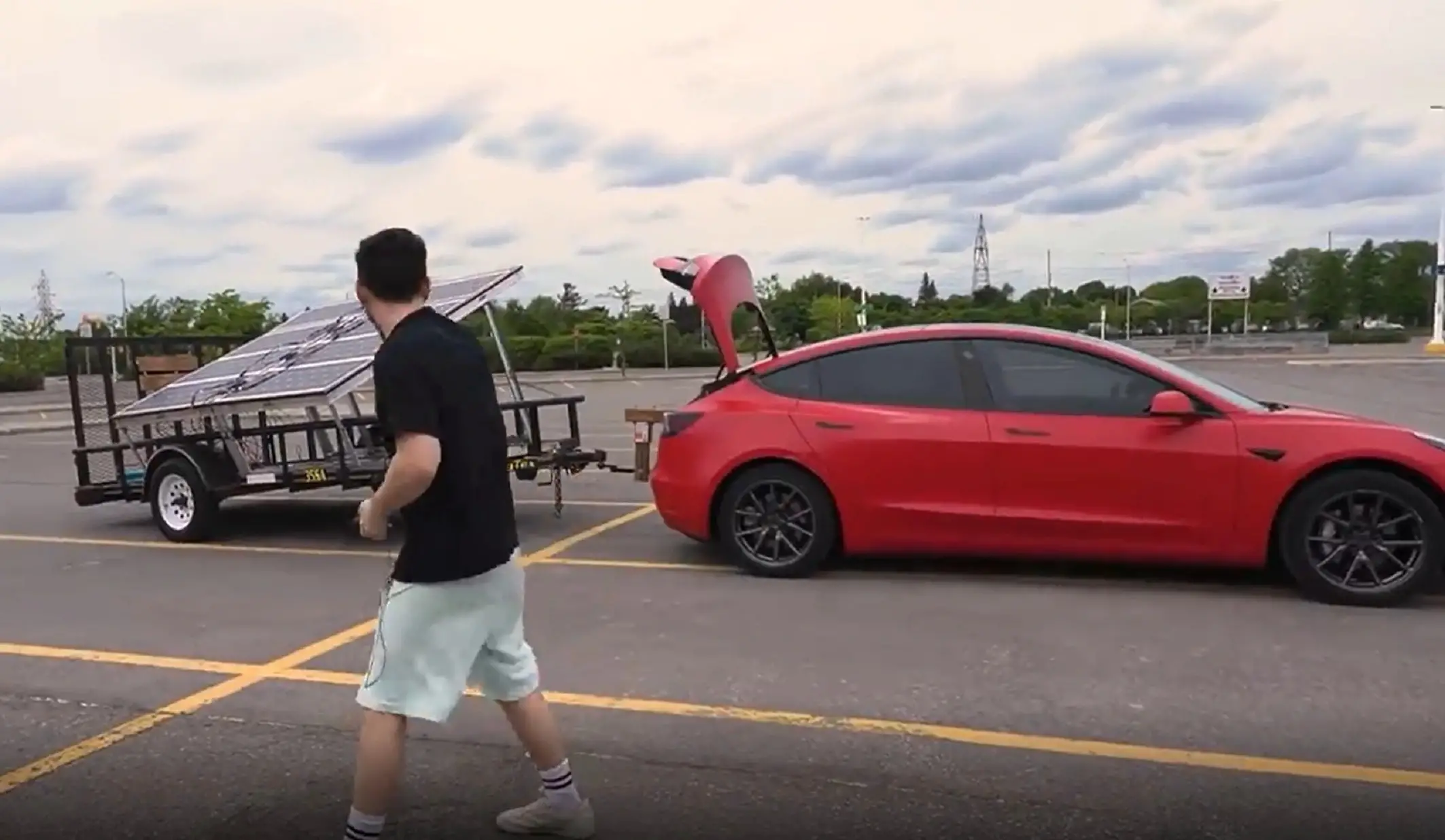Elon Musk, the billionaire founder of Tesla, is best known for his high-profile businesses, SpaceX and Tesla, but he also owns several strange projects. He claims that through one of them, he began working toward achieving “symbiosis” between artificial intelligence and the human brain.
Neuralink had implanted one of its computer chips when we last heard from it, inside a pig’s brain to show how it could record neural activity as the animal snuffled around a pen. These chips are made up of arrays of electrodes that record neuronal activity patterns, which can later be decoded and transformed into input commands for various devices.
Neuralink showcased its most recent developments at a “show and told” session.
A monkey named Sake from Neuralink demonstrated a novel trick using its mind to follow instructions and type on a virtual keyboard. The Neuralink implant on the monkey can wirelessly recharge.
Sake seems to have been persuaded to sit with a fruit smoothie next to a charger. Sake used his imagination to control an onscreen keyboard (all thanks to the implant, of course).

What does the National Institute of Health Has Determined
The product from Neuralink captures the brain’s neurons’ activity potentials. This is accomplished by placing an electrode sufficiently close to the synapses of two brain neurons and recording the electrical impulse from those synapses.
According to National Institutes of Health research, this procedure harms neither the host patient where the electrode is implanted nor the neurons. Deep Brain Stimulation is the formal term for it (DBS).
In an ambitious initiative to help the paralysed move once more, Neuralink is engaged. The research would use a computer to activate and replicate the movement regions of the brain, which no longer experience synaptic activation.
“Show and Tell”
“Welcome to Show and Tell” was typed out slowly to welcome everyone to the Neuralink event. A monkey using his brain to operate a computer was the typer. In actuality, the monkey used a variety of sophisticated learning behaviours to manipulate the computer.

The Neuralink staff members described how they taught the monkey to respond to the numbers and characters displayed on the screen. The team gave the monkey rewards for tracing letters and numbers before gradually introducing more challenging words and figures. The monkey eventually produced a sentence as a result of this.
The neural activity is translated into an organised form via an implant in the monkey’s brain. The monkey discovers how to operate the screen by focusing on the letters.
The phrase “high fidelity” is used throughout the event to describe an excellent reaction to electric stimulation. The electrodes record neuronal activity; signals are released from the neurons and recorded by the computer chip before being mapped, arranged, and duplicated.
One Neuralink engineer compared the path to understanding the brain to a mile-long strip symbolising everything a brain can do. We have barely covered the first few inches of the mile-long trail to understanding.
Neuralink disclosed ideas for a single implant device that could support 10,000 electrodes in a single thread of electrodes. Currently, the electrodes are implanted by a surgical robot. The neurosurgeon prepares the patient, and the robot inserts the implants into the brain. Electrode threads are too fragile to be grasped by a human hand because of their sensitive nature.
Neuralink is now looking for human volunteers in light of these findings.
Not just Neuralink but also

In its pursuit of brain-computer or brain-machine interface (BCI) technology, Neuralink is not acting alone. Academic researchers have consistently generated research articles, and firms, including BlackRock Neurotech, Synchron, and Paradromics, are also active. Some people, like Nuro, use noninvasive techniques that don’t involve surgery.
Neuralink’s focus on mass production sets it apart from some of those initiatives.
“Production is hard; I’d estimate 100 to 1,000 times tougher to get from a prototype to a device that is safe, dependable, operates in various conditions, is affordable, and is done at scale,” Musk added. It’s pretty challenging.
Neuralink is also attempting to position its brain chips on the exterior of the dura, a layer that is one layer external to the brain. This calls for significant modifications to the robot’s needles and needle steering systems, which the business is now developing.
According to Christine Odabashian, in charge of Neuralink’s surgery engineering team, there are only ten neurosurgeons for every million individuals. “We need to figure out how one neurosurgeon could oversee several treatments at once to do the most good and have a cheap and accessible technique,” said the researcher.





